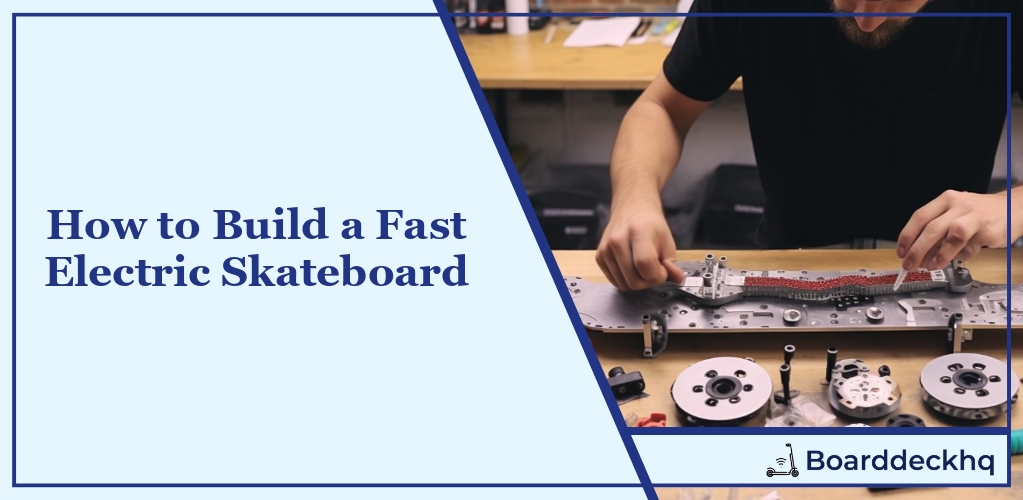Imagine the wind rushing past your face, the thrill of speed beneath your feet, and the satisfaction of knowing you crafted that experience with your own hands. Yes, we’re talking about the exhilarating adventure of riding a fast electric skateboard you’ve built yourself. From understanding the essential components to testing performance and taking safety measures, this guide will equip you with all the knowledge you need to craft your personal speed demon.
What we’ll cover:
- Essential Electric Skateboard Components
- Building Process
- Boosting Electric Skateboard Speed
- E-Skateboard Functioning
- DIY E-Skateboard Kits
- Performance Testing
- Riding Safety Measures
- Customization Tips
- DIY E-Skateboards: Drawbacks
- Future of E-Skateboard Technology
Ready to unleash your inner speed demon? Let’s get started on building that fast electric skateboard!
Essential Components for a Fast Electric Skateboard
Building a fast electric skateboard is no small feat, but with the right components and a bit of DIY spirit, it’s definitely within reach. The first step is to gather all the essential parts: the deck, wheels, trucks, motor, battery, enclosure, drive system, speed control, and transmission system. Each of these components plays a crucial role in making your electric skateboard not only functional but fast.
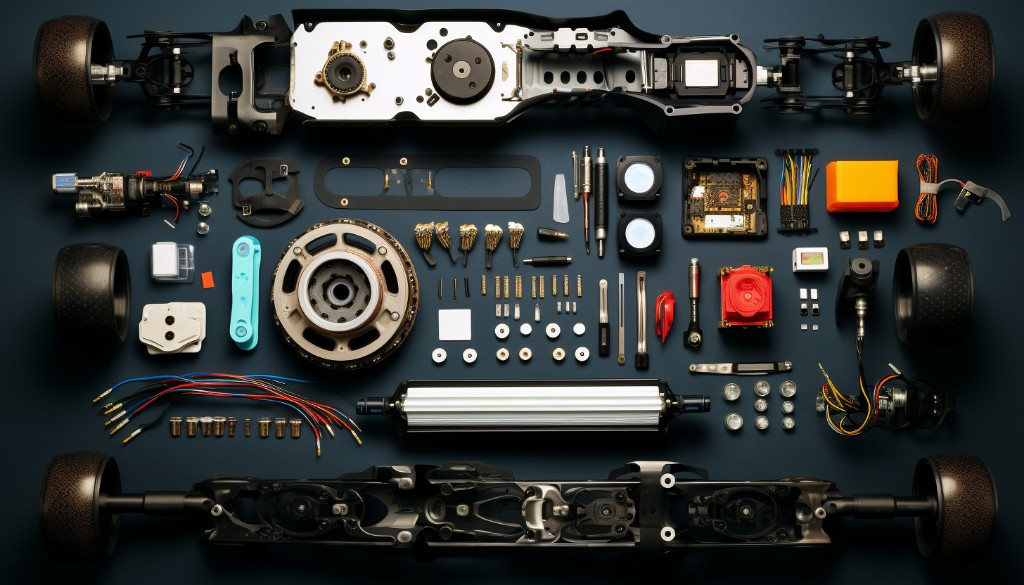
Selecting a Suitable Deck
Let’s start with the deck. It’s the foundation of your electric skateboard, and choosing the right one can make a significant difference in your riding experience. A quality deck provides stability and comfort while riding, which is essential when you’re cruising at high speeds. You’ll want to look for a deck that is sturdy yet flexible and has a good balance of length and width. Remember, the shape of the deck can also influence how your board handles turns, so choose wisely.
Choosing Appropriate Wheels and Trucks
Next up are the wheels and trucks. The wheels’ diameter and hardness can greatly affect the performance and speed of your DIY electric skateboard. Larger wheels tend to be faster but may require more power to get going. On the other hand, smaller wheels provide quicker acceleration. As for hardness, softer wheels offer better grip but slower speeds, while harder wheels are faster but may lack grip.
When it comes to trucks, you want to focus on their width and baseplate angle. A wider truck offers stability at high speeds but can make turning more difficult. A narrower truck provides better turning but may feel less stable at high speeds. The baseplate angle can also affect turning and stability, so consider this when making your choice.
Opting for the Right Motor
Choosing the right motor is another critical step. The motor’s power, measured in watts, can directly affect the speed and performance of your electric skateboard. Higher wattage generally means more speed but can also drain your battery faster. Consider your riding style and where you’ll be using your board when selecting your motor. If you’re planning to tackle steep hills or need a lot of speed, a hub motor might be the right choice for you.
Deciding Between Belt Drive and Hub Motors
When it comes to the drive system, you have two main options: belt drive and hub motors. Both have their pros and cons. A belt drive offers more torque and better acceleration, making it a good choice for tackling hills. However, it requires more maintenance than a hub motor and can be a bit noisier.
On the other hand, hub motors are quieter and require less maintenance than a belt drive. They’re also more efficient, meaning they can help extend your battery life. However, they offer less torque and acceleration than a belt drive. Consider your riding needs and preferences when deciding between these two options for your DIY electric skateboard.
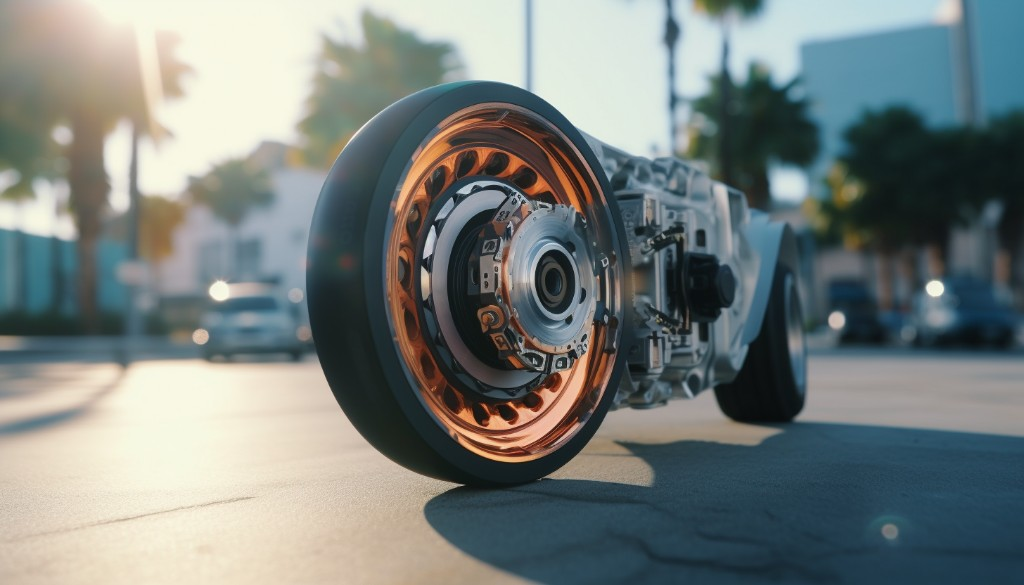
Importance of Electronic Speed Control (ESC)
Last but certainly not least is the Electronic Speed Control (ESC). This little device plays a crucial role in controlling the speed and performance of your DIY electric skateboard. It works by regulating the power from the battery to the motor. A high-quality ESC can provide smooth acceleration and deceleration, which is key for a comfortable and safe ride. It can also help prevent motor overheating, which can extend the life of your board. So don’t skimp on this component — it’s more important than you might think!
Detailed Process of Building a Fast Electric Skateboard
So, you’re looking to dive into the world of DIY electric skateboarding? Awesome! I remember when I first started, it was a bit overwhelming but also exciting. Let’s start from the beginning and assemble a fast electric skateboard together.
Preparing the Deck
The first step in building your own DIY electric skateboard is preparing the deck. This is where you’ll mount all the other components. You want to select a high-quality deck with the right length and flex for your needs. I prefer stiffer decks for more stability at high speeds.
Once you have your deck, you’ll need to drill holes for the trucks and motor mount. Be sure to measure twice and drill once! The last thing you want is misaligned components. After drilling, you can optionally apply grip tape for better foot traction.
Assembling the Drive System
Next, we’ll be putting together the drive system. This includes the hub motor, wheels, and trucks. The motor shaft will connect to the wheel via a belt drive system. I personally find hub motors to be less noisy and more efficient.
Start by attaching your trucks to the deck using the holes you drilled earlier. Make sure they’re tight! Then, mount the motor onto the motor mount attached to your trucks. Connect the motor shaft to your wheel using a belt drive system for efficient power transfer.
Once you have your wheels on, give them a spin to make sure everything is aligned properly. If it’s not, adjust as necessary.
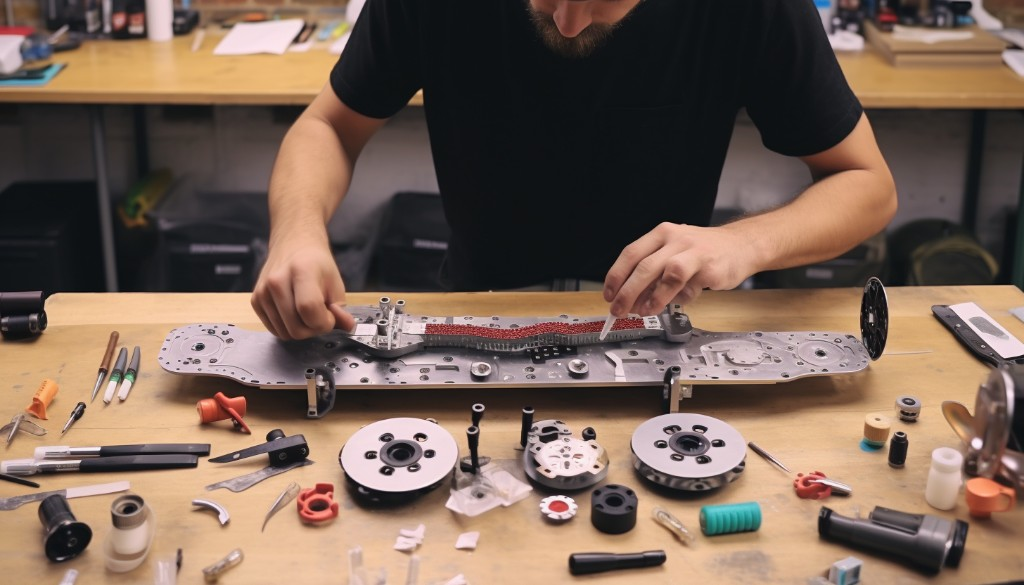
Setting Up the Electronics
Now that we have our drive system assembled, it’s time to set up the electronics. This includes your Electronic Speed Controller (ESC), lipo batteries, and transmitter/receiver.
First, connect your ESC to the motor. This will control the speed of your electric skateboard. Then, connect your lipo batteries to the ESC. Make sure to handle these batteries with care as they can be quite volatile if mishandled.
Next, connect your receiver to the ESC. This will allow you to control your board with a remote. Finally, secure all your electronics in a waterproof casing and attach it to the underside of your deck. Voila! You’ve built your very own DIY electric skateboard!
How to Increase Your Electric Skateboard’s Speed
Now that we’ve built our electric skateboard, let’s talk about how we can increase its speed. There are several factors to consider here, from wheel size to battery charge, maintenance, riding mode, and even weight reduction.
Using Larger Wheels
One of the easiest ways to increase the top speed of your electric skateboard is by using larger wheels. Larger wheels cover more ground per rotation, increasing your board’s top speed. However, keep in mind that this might slightly decrease your acceleration.
Keeping the Battery Fully Charged
Another factor that affects the speed of your electric skateboard is the charge level of your lipo batteries. A fully charged battery will provide more power, resulting in higher speeds. Therefore, it’s important to always keep your batteries fully charged before riding. Additionally, regular maintenance and proper storage of your lipo batteries can also help maintain optimal performance.
Remember, it’s not just about going fast. It’s about having a smooth and safe ride. So, always wear protective gear and respect traffic rules when you’re out there enjoying your high-speed electric skateboard!
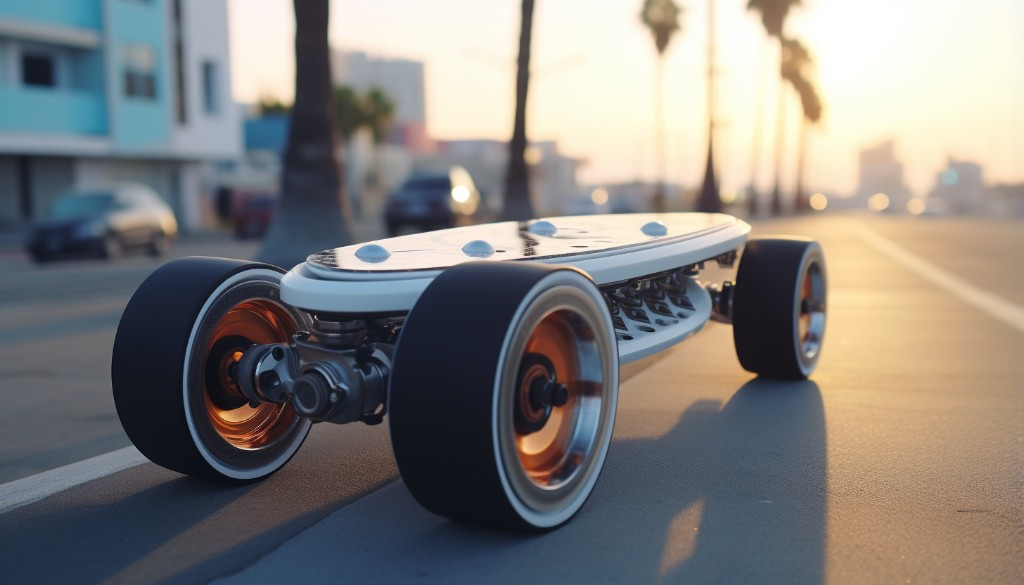
Understanding the Functioning of an Electric Skateboard
Building your own electric skateboard is like assembling a puzzle where each piece has a crucial role. To grasp how to put together a fast and efficient electric skateboard, it’s important to first understand how these e-boards work.
The heart of any electric skateboard is its motor, which powers the board forward. There are two main types: hub motors and belt drives. Hub motors are built directly into the wheels, providing a stealthy look and feel, with less visible moving parts. Belt drive motors, on the other hand, use a belt and pulley system to transfer power from the motor to the wheels. While noisier and more visible, belt drives are often more powerful and offer better torque for steep hills.
Then comes the battery pack. Just as a car runs on gasoline, an electric skateboard runs on battery power. The larger the battery’s capacity, the longer and faster you can ride. The battery is typically housed in a protective case attached to the underside of the deck.
The speed controller is the brain of your electric skateboard. It takes input from the wireless remote control that you hold in your hand, regulating the power that flows from the battery to the motor.
The deck and wheels are just as important in an e-skateboard as they are in traditional skateboards. The deck provides stability and control while the wheels determine how smoothly you roll over different terrains. The truck system attaches the wheels to the deck and allows for steering and maneuverability.
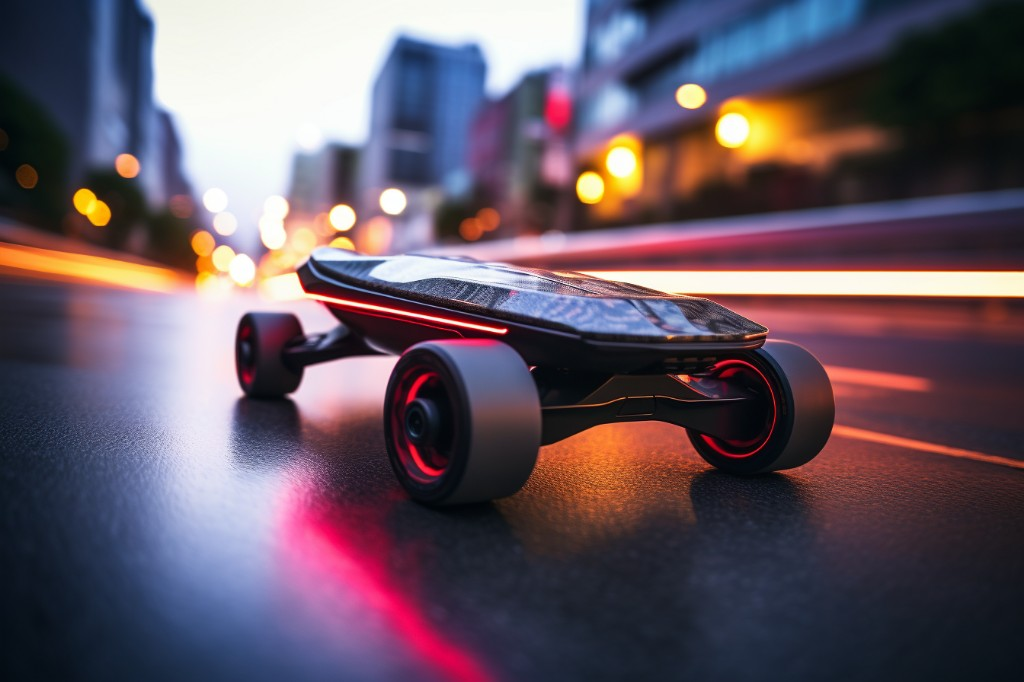
DIY Electric Skateboard Kits: An Overview
Now that we’ve understood how an electric skateboard functions, let’s delve into DIY electric skateboard kits. These kits are essentially pre-packaged boxes containing all the components needed to build your own e-board. They can be a convenient and cost-effective way to enter the world of electric skateboarding, especially for those who may not have the time or knowledge to source individual parts.
DIY electric skateboard kits come in a variety of configurations, allowing you to customize your build based on your specific needs and preferences. Whether you’re looking for a high-speed board for long commutes or a more leisurely ride for cruising around the neighborhood, there’s likely a kit out there for you.
Most kits will include a deck, a motor (either hub motor or belt drive), a battery pack, a speed controller, and all necessary hardware. Some may also include extras like grip tape, lights, or even conversion kits to transform a regular skateboard into an electric one.
Testing Your Electric Skateboard’s Performance
After assembling your DIY electric skateboard, it’s essential to test its performance and speed. Testing allows you to ensure that everything is working as it should and helps identify any potential issues before you hit the road.
Start with a stationary test. With the board on a non-moving surface, gradually increase the throttle and observe how the wheels and motor respond. Listen for any unusual noises, and check that all parts are secure and functioning correctly.
Once the stationary test is successful, it’s time to take your e-skateboard for a spin. Start slow, gradually increasing speed as you get comfortable. Pay attention to how the board handles turns, accelerates, and brakes. Remember, speed isn’t everything. Stability, control, and comfort are equally important when it comes to enjoying your rides.
Finally, consider using a GPS app or a specialized device to measure your electric skateboard’s top speed and acceleration times. This data can be helpful in adjusting your setup for optimal performance.
Building and testing your own electric skateboard can be an exciting and rewarding process. With a solid understanding of how each component works, a quality DIY kit, and careful testing, you’ll be zipping around on your custom electric skateboard in no time.
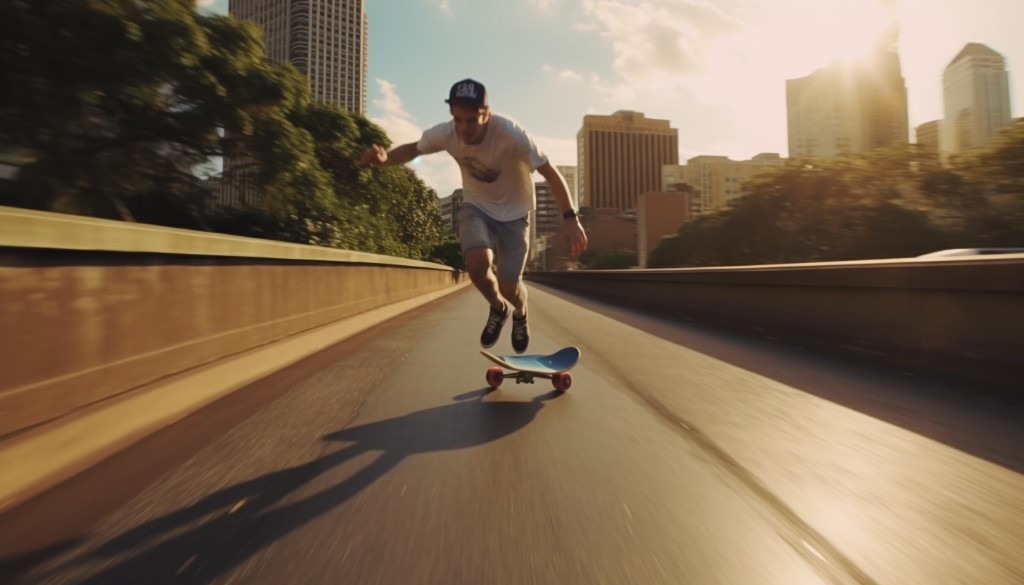
Safety Measures While Riding a Fast Electric Skateboard
While zipping through the city on your electric skateboard, the thrill and exhilaration can sometimes make us forget the importance of safety. Just as we need seat belts in a car, we also need protective gear while riding an e-skateboard.
Always don your helmet before you start your ride, it’s not just for show, it’s your first line of defense against any head injury. Also, remember to wear knee and elbow pads to protect your joints from scrapes and bruises. It’s also a good idea to wear gloves to protect your hands and wrist guards to prevent sprains or fractures in case you fall.
And let’s not forget about visibility. Reflective clothing and lights on your board can ensure you’re seen by others, particularly when riding in low light conditions or at night. Also, always keep in mind the laws and regulations in your area related to electric skateboarding.
Tips for Customizing Your Electric Skateboard
When it comes to customizing your electric skateboard, the possibilities are as endless as your imagination. Here are a few tips to get you started on this exciting journey:
- Upgrade Your Wheels: Bigger wheels can increase speed while softer ones can provide better grip and smoother rides over rough terrains.
- Enhance the Battery: A more powerful battery can boost your board’s speed and range.
- Optimize the Deck: Swapping out the deck for a more flexible one can improve maneuverability and provide a more comfortable ride.
- Personalize Your Grip Tape: Customizing your grip tape is a fun way to showcase your personal style. Plus, it improves traction between your shoes and the board.
Remember, customizing your DIY electric skateboard isn’t just about enhancing performance, it’s also a chance to inject your personality and make it truly yours.

Potential Drawbacks of DIY Electric Skateboards
Building your own DIY electric skateboard can be an exciting project, but it does come with a few potential drawbacks. One major challenge is the time commitment. It’s not something you can complete in an afternoon. Expect to dedicate several hours, if not days, to the process.
Another challenge is the technical aspect. You’ll need a good understanding of electronics and mechanical systems. Mistakes can lead to poor performance or even safety risks. Furthermore, sourcing quality components can be difficult and costly. There’s also the issue of warranty; pre-built electric skateboards often come with a warranty, but when you build your own, you’re on your own if something goes wrong.
Future Advancements in Electric Skateboard Technology
Looking ahead, the future of electric skateboard technology promises some exciting advancements. We might see boards with integrated AI systems that can adjust speed and braking based on terrain and rider behavior. Battery technology could also improve, providing longer range and faster charging times.
As for the DIY scene, these advancements may present new challenges but also more opportunities for customization. Imagine being able to program your own AI for your DIY electric board, or being able to swap in a new generation battery for more range and power.
As with any technology, advancements will continue to push the boundaries of what’s possible. And for those of us who love to tinker and customize, these future advancements will only add more layers of excitement to our DIY electric skateboard projects.

Closing Thoughts
Building a fast electric skateboard involves careful selection of essential components and a clear understanding of the skateboard’s functioning. The process can be simplified by using DIY electric skateboard kits, which provide an overview of the necessary parts and steps to assemble your ride. However, it’s crucial to remember that safety should never be compromised for speed. Regularly testing your skateboard’s performance and adhering to safety measures ensures an exhilarating yet secure riding experience. The world of electric skateboards is continually evolving, with future advancements promising to enhance speed, safety, and overall riding experience.
Frequently Asked Questions
What is the fastest electric skateboard?
The fastest electric skateboard on the market can reach speeds up to 60 mph. However, the speed of an electric skateboard depends on several factors, including its motor power, battery life, rider weight, and the terrain.
How can I increase the speed of my electric skateboard?
Increasing the speed of your electric skateboard involves upgrading key components like the motor and batteries. You can also reduce the board’s weight and adjust the gear ratio for better performance. However, remember to prioritize safety when trying to boost speed.
What are the best components for a DIY electric skateboard?
The best components for a DIY electric skateboard include a high-quality deck, powerful motor, long-lasting batteries, durable wheels, and a reliable remote control. It’s also recommended to use a good quality ESC (Electronic Speed Controller) for smoother and more efficient rides.
Is it safe to ride a fast electric skateboard?
Yes, it is safe to ride a fast electric skateboard as long as you adhere to safety measures. This includes wearing protective gear such as a helmet, knee pads, and elbow pads. It’s also important to regularly maintain your skateboard and ride within your skill level.
What are the future advancements in electric skateboard technology?
Future advancements in electric skateboard technology may include improved battery life, faster charging times, increased speed and range, better connectivity, and more advanced safety features. The incorporation of AI and IoT technologies may also lead to smarter, more intuitive skateboards.
